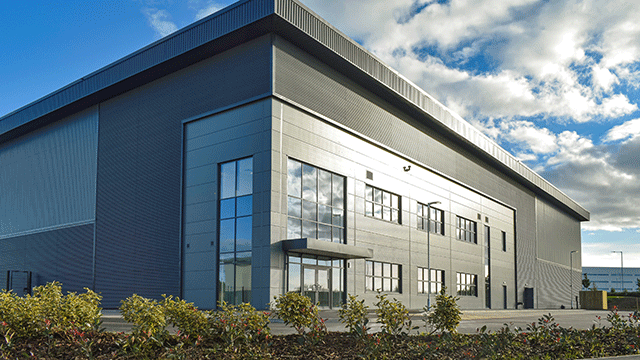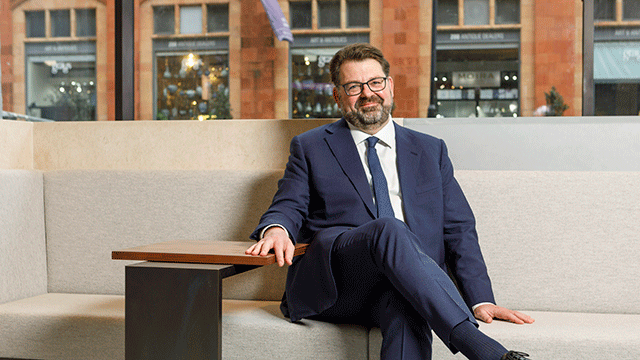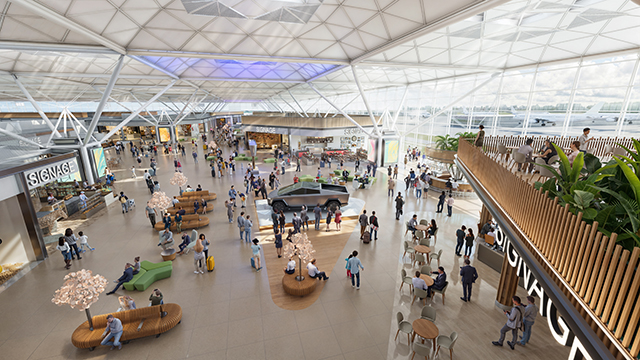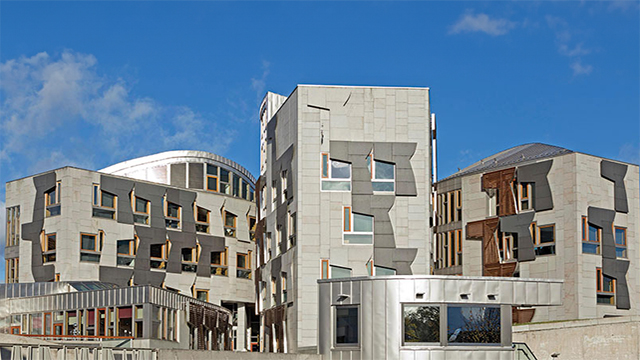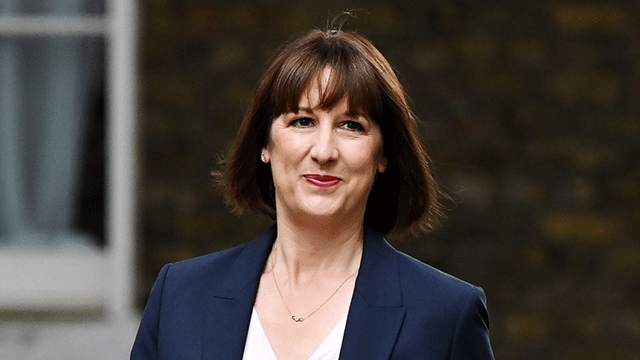Blink and you’ll miss it. Overthink it and the moment will be gone. Sometimes even the most cautious of real estate professionals needs to shake off the doubt and do the deal. Let the fear of missing out trump the fear of being first.
If that makes you nervous, you’re not alone. Tomáš Jurdák admits to some worries as MiddleCap, the investment firm for which he is the London-based head of real estate, gears up to get back on the acquisition trail. Money could start pouring into the market and push prices up just as he and the team get going. Or maybe they will call the bottom too early and watch as prices drift further downwards after they seal deals.
But these are occupational risks. You manage them. Jurdák, a beekeeper in his spare time, doesn’t need to be reminded that sometimes you can get stung. You just keep your wits about you and try not to let it happen.
“Now is the time to build a pipeline for the next five to 10 years,” he says from MiddleCap’s West End offices. “I don’t think I’m the only one who sees this.”
That means the clock is counting down until even more buyers cotton on, which makes maintaining a sense of urgency vital. “When you are a wise investor, you never wait for the bottom, because you never find it – you just miss something,” he says. “I think we are deep enough, because when you are not looking at the value of the properties but you are looking at the performance, it’s attractive to be investing.”
Down to business
Jurdák is a former chief executive of HB Reavis UK who joined MiddleCap as partner and head of real estate in 2018. That year the company made its first real estate play in the UK, buying a site on Rushworth Street in Southwark, SE1, and launching its Southworks development, a 68,000 sq ft block that won an award as the country’s “smartest” building owing to its central digital operating system.
The UK portfolio now also includes Seal House, EC4, on the banks of the Thames, a 141,000 sq ft redevelopment project transforming one of the last 1970s offices along that stretch of the river.
Jurdák has wanted to do more, but the market has been against him. Almost a year ago, speaking with EG at MIPIM, Jurdák said the market had some way to go before settling. He saw a “herd mentality” among real estate investors, as many players delayed investing and developing in the hope the market outlook would become clear – an approach he said was “destroying the natural cycle because it is reactive and emotional”.
By then the company had already earmarked £190m for acquiring projects in London and Berlin, but uncertainty over pricing continued to deter the firm from imminent investments.
That made for a quiet year, although Jurdák says it bought three projects in Dubai, one of which it has already sold and the other two of which are in the design phase. “It was quite quick and successful, and the pricing, in one year, almost doubled. It’s crazy, the growth in Dubai,” he says. “Now I would be a bit nervous, because pricing went really high. If you are acquiring now, I don’t know if there is any more space to look for growth.” (MiddleCap declined to name the properties or give further details of the deals. There are no Dubai projects listed in the portfolio on the company’s website.)
Now the team wants to look closer to home again, and although some may still be biding their time, for Jurdák the moment has arrived. “We have big plans and big ambitions to acquire more projects,” he says. “Last year, we didn’t see sufficient discount in the market but for the past two to three months projects have been coming.”
The strategy is simple. Prioritise measuring final project profitability, analyse net operating income, capitalisation rates, IRRs, profitability index and net present value – as opposed to value decreases – then work backwards.

“I’m not looking at the decrease in value,” Jurdák says. “I’m looking at whether my final project measures are working so I can be sure about the stock to invest in. If there is another 5% decrease, I am happy to miss out on that.”
So new projects are on the cards but in familiar markets. When it comes to exploring new horizons, Jurdák remains steadfast: “We have no ambition with new markets.” Instead, the investor and developer maintains that success hinges on selectivity. It will be closing in on specific markets for acquisitions, namely London and Berlin.
Jurdák sees similarities between the two cities as “transparent international markets” appealing to players from all over the world. “The difference is that the German market needs to go through another six to 12 months of recovery,” he says. “Here in London we are ahead, we are picking up. In Germany it needs some more time.”
Sustainability challenges
Increasingly, the number crunching for a project extends to carbon calculation. It’s a topic that Jurdák returns to repeatedly in both professional and personal contexts. He admits to concern over his own impact on the environment given his frequent flights back to his native Slovakia for skiing trips, and tries to find ways to make his operational carbon very low. He jokes that he is holding on to a beloved shirt his wife wants to throw out, even as it threatens to become more holes than fabric.
In terms of what the ESG push means for MiddleCap’s projects, he says the added complexity is part of the fun. “Ten years ago, delivering space, there was no excitement,” he says. “It was a commodity, but today it’s exciting. Today the question is: how can you push the bar?”
That gets ever more difficult in an age when so many new developments have BREEAM Outstanding ratings, and to stand out requires shaving off even more kilos of carbon per sq m. “It was easy to get from 1,200 to 800. But to get from 750 to 500, and then from 500 to 480, it’s almost impossible. This is now the challenge.” Meeting that challenge starts from day one – or “stage zero” – of any project.
Jurdák is just as passionate about pushing the envelope on tech, but despite the many benefits commercial real estate has been afforded at the hands of tech, the steep upward trajectory in the facilities now available to agents, investors and developers has come with some bugs.
He says where tech was once lagging behind the needs of its end users, it is now so advanced that it is difficult to implement because of outdated legislation and trepidation from users.
“There are some limitations on how you can use technology, and sometimes the legislation is slightly behind technological development,” he says. “It’s becoming super-sensitive.” He cites privacy laws around facial recognition as an example.
The facial recognition row is not new. The Metropolitan Police came under fire when it failed to publicise a secret image-sharing agreement in the capital in 2019. The controversial surveillance scheme, which involved tracking individuals without their consent, was agreed between Camden police and Related Argent in 2016. Despite the landlord claiming the deal took place “to ensure public safety,” when news of the tech’s usage broke in August 2019, it was met with public outrage and questions about the ethics and legality of the move.
These concerns still exist in the real estate world. While many people are happy to use facial recognition on their own devices or computers, changing overall sentiment and getting people to agree to use it in a building has proved difficult for MiddleCap.
Investing in innovation
“A few years ago, we were trying to implement facial recognition for the doors in a building and I was shocked: 80 people didn’t agree to be in the database, and it was anonymous,” he says. “So in the end we had it installed there but we had to switch it off because people didn’t like it.”
However, the investor remains undeterred when it comes to exploring and implementing advanced tech into its buildings to help deliver a better-functioning, more sustainable asset.
“Any innovative process also brings additional risk to people, and our role as a developer is to manage the risk in a way that we know what the outcome is,” he says. “We are so excited to be able to bring in new ideas, but we need to make sure that there’s no problem.”
He says one way for AI and machine learning to come into its own is by implementing it in circular economy systems, such as logging and storing materials data during the construction process to help monitor waste and reuse via materials passports.
“Today, when you are demolishing buildings, everything is a headache,” he says. “But once these headaches become items which are defined – they are 3D scanned and they exist in some database – you are able to use them in a new way somewhere. Then there will be a big space for reusing and decreasing carbon.”
Rising to these challenges of implementing cutting-edge tech seems as natural to Jurdák as taking to the slopes. And if anyone can meet them, you could bet your shirt on him – just not his shirt, that’s good for a few years yet.
Images from PR
Send feedback to Chanté Bohitige
Send feedback to Jess Harrold
Follow Estates Gazette





